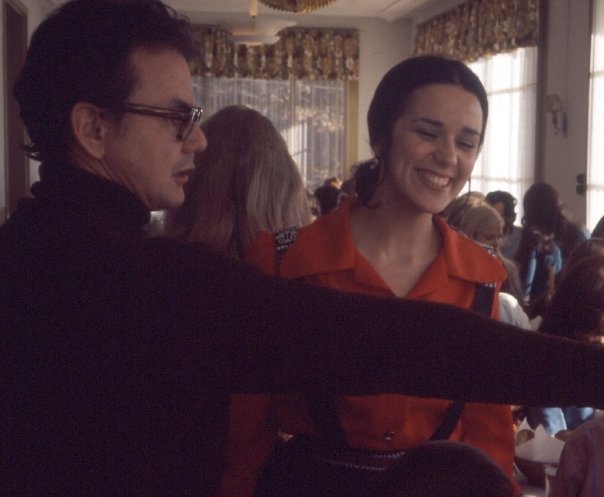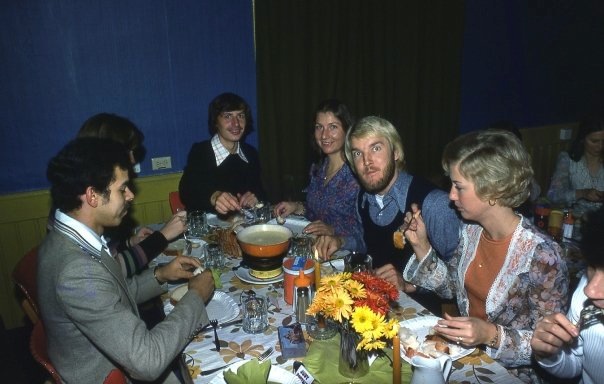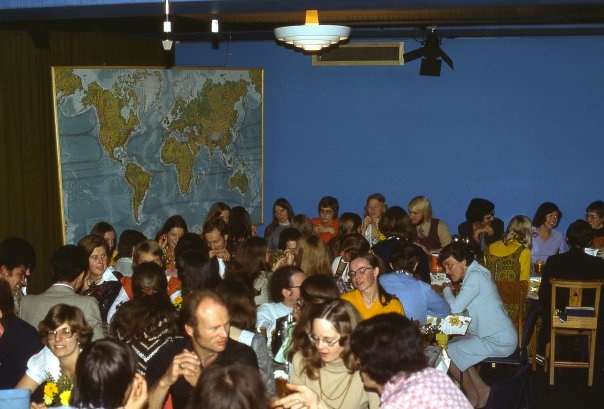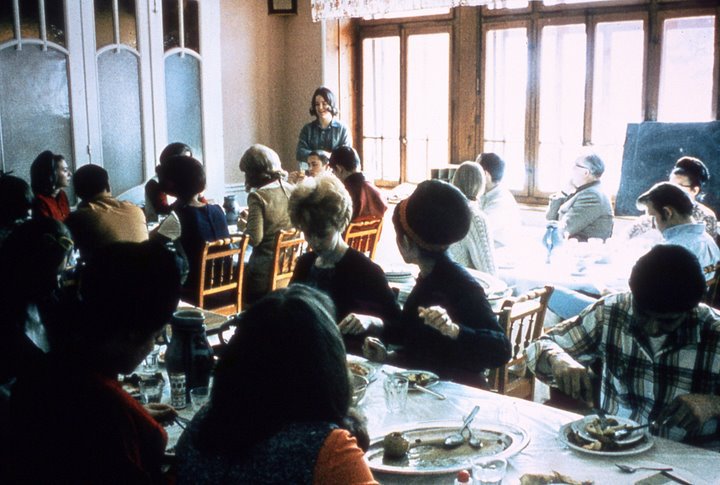
How Did YWAM Love Feasts Begin?
by Tom Bloomer
In 1971 at YWAM Lausanne, there were a couple of serious accidents on Sunday afternoons. When Loren and Darlene Cunningham sought the Lord as to the reason, they understood Him to be saying He would restore His protection when there was a new commitment to His holiness, especially concerning Sabbath observance.
 There were a few other key influences during the same period.
There were a few other key influences during the same period.
One was a visit from two sisters of the Evangelical Sisterhood of Darmstadt, who were surprised at the unruliness of mealtimes. They suggested that meals should be times of peace, quietness, and relationship.
Reona Peterson-Joly had been teaching Orthodox Jewish children. She shared how these families observed the Sabbath: the house was cleaned from top to bottom to purge it of leaven; there was no work on the Sabbath day; the Sabbath began the night before with the best meal of the week, and most of all, there was a total focus on the Lord.
Another key influence at that time was Joe and Judi Portale’s return to the base from Czechoslovakia. There they participated in a 250 – year old Moravian tradition: the ‘love feast’, which consisted of passing around bread and telling each person what they meant to them, and how they loved them.

The Cunninghams proceeded to restore the Sabbath by adapting the Jewish traditions to YWAM Lausanne:
- No work on Sunday — so the noon meal was usually cold, to reduce the kitchen work.
- No sports or hard play — this wasn’t a legalistic rule, but an outworking of the commitment to ‘turn your foot from your own pleasure on the Sabbath’.
- The Sabbath was a day of quiet, rest, walks in the forest, and concentration on the Lord.
- To prepare for the Sabbath, we had a love feast on Saturday evenings.
The tables were beautifully decorated with candles, centerpieces, and flowers. The best meal of the week was prepared, everybody dressed up, and we set place cards so people wouldn’t always sit next to their same friends all the time.

There was a sense of expectancy and holiness that whole day. Students and staff both prayed for hours during the afternoon for the love feast. People would go and knock on each other’s doors, to confess things to one another and ask forgiveness. Nobody wanted to be an obstacle to the Lord’s meeting with us that evening.
The children also had their own special meal with decorations, but it was earlier so they could be put to bed and the parents could be free to fully participate in the love feast.

Each week a different group would take responsibility for serving everyone else. Sometimes there were special songs and music but it was oriented toward worship, not entertainment. At the end of the meal, the love feast leader gave a meditation on one aspect of the character of God. Then we went straight into a time of worship, still seated around the tables.
The worship was not directed from up front, anybody could lead out in prayer, read a passage of Scripture, start a song, etc. The worship would last at least an hour, or even two. Nobody wanted to leave. We waited upon God together, in His Presence. In other words, it was a vertically, and horizontally, oriented meal.
YWAM Lausanne learned to worship God during the love feasts (because as late as 1974, we didn’t know how to worship yet, we had ‘singing’).

From Lausanne the love feast spread to other YWAM bases, then in 1974 the Cunninghams took it to Hawaii, and it went around the YWAM world. Later, as Jannie Rogers has said, “The god of the weekend stole it away.” He’s pretty powerful …. and it’s true, it was a tremendous amount of work. The hospitality crew would spend most of Friday to prepare the tables, and they prayed about the seating, even which singles to seat together (really!). Just folding the napkins took ten people a full hour. As base leader, I took the whole of Friday afternoon to prepare the meditation for the love feast.
In more recent times in YWAM, ‘love feast’ has come to mean any meal that’s a bit different from the normal ones. Such as the ‘love feast’ we attended at one base which consisted of a buffet, then everyone sharing their most embarrassing experience. No worship, no mention of the Lord; and the Holy Spirit didn’t even visit that one.
Fun nights are great. Most bases could use more of these kinds of evenings, they’re tremendously important in community-building. But let’s not call them ‘love feasts’, OK? Throughout the history of the Church, that term has meant a community meal which is lived in true fellowship and in the presence of the holiness of God.

Loren and Darlene did a great job of adapting the Biblical and Jewish Traditions to the YWAM culture of the early 1970’s. Now we need someone to re-adapt them for postmodern youth. What could a love feast look like for Millennials? It should be different from what we had going for those years in Lausanne, but it would of course include the emphasis on beauty, fellowship, solemn joy, and the holy Presence of God.
When you receive the vision from Higher Up, please invite me once. I’d like to see what it looks like.
 Tom Bloomer joined Youth With A Mission in 1974 in Lausanne. He and his wife Cynthia joined YWAM’s French Ministries, led that work for several years, and then became base leaders at Lausanne. In 1983 they responded to a call from Loren Cunningham and Howard Malmstadt to help develop the University of the Nations (UofN). A Master’s degree in missiology from Wheaton (1987) and years of cross-cultural experience proved invaluable as Tom helped coordinate, refine, and improve the different courses developing through the UofN. Tom completed a Ph.D. in Theology of Education at Trinity International University in 1999 and has served as the International Provost of the UofN since 2001.
Tom Bloomer joined Youth With A Mission in 1974 in Lausanne. He and his wife Cynthia joined YWAM’s French Ministries, led that work for several years, and then became base leaders at Lausanne. In 1983 they responded to a call from Loren Cunningham and Howard Malmstadt to help develop the University of the Nations (UofN). A Master’s degree in missiology from Wheaton (1987) and years of cross-cultural experience proved invaluable as Tom helped coordinate, refine, and improve the different courses developing through the UofN. Tom completed a Ph.D. in Theology of Education at Trinity International University in 1999 and has served as the International Provost of the UofN since 2001.